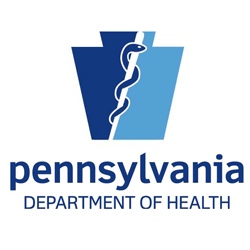- CMS: Medicare Program; Implementation of Prior Authorization for Select Services for the Wasteful and Inappropriate Services Reduction (WISeR) Model
- Public Inspection: CMS: Medicare Program: Implementation of Prior Authorization for Select Services for the Wasteful and Inappropriate Services Reduction Model
- CMS: Secretarial Comments on the CBE's (Battelle Memorial Institute) 2024 Activities: Report to Congress and the Secretary of the Department of Health and Human Services
- HHS: Patient Protection and Affordable Care Act: Marketplace Integrity and Affordability
- HRSA Announces Action to Lower Out-of-Pocket Costs for Life-Saving Medications at Health Centers Nationwide
- Public Inspection: HHS: Patient Protection and Affordable Care Act: Marketplace Integrity and Affordability
- Increased Risk of Cyber Threats Against Healthcare and Public Health Sector
- Eight Hospitals Selected for First Cohort of Rural Hospital Stabilization Program
- Announcing the 2030 Census Disclosure Avoidance Research Program
- CMS: Medicare Program; Hospital Inpatient Prospective Payment Systems for Acute Care Hospitals and the Long-Term Care Hospital Prospective Payment System and Policy Changes and Fiscal Year 2026 Rates; Requirements for Quality Programs; and Other Policy Changes; Correction
- CMS: Medicare Program; Hospital Inpatient Prospective Payment Systems for Acute Care Hospitals and the Long-Term Care Hospital Prospective Payment System and Policy Changes and Fiscal Year 2026 Rates; Requirements for Quality Programs; and Other Policy Changes; Correction
- CMS: Medicare and Medicaid Programs; Contract Year 2026 Policy and Technical Changes to the Medicare Advantage Program, Medicare Prescription Drug Benefit Program, Medicare Cost Plan Program, and Programs of All-Inclusive Care for the Elderly; Correction
- CMS: Medicare and Medicaid Programs; Contract Year 2026 Policy and Technical Changes to the Medicare Advantage Program, Medicare Prescription Drug Benefit Program, Medicare Cost Plan Program, and Programs of All-Inclusive Care for the Elderly; Correction
- CMS: Medicare Program; Prospective Payment System and Consolidated Billing for Skilled Nursing Facilities; Updates to the Quality Reporting Program for Federal Fiscal Year 2026
- CMS: Medicare Program; FY 2026 Hospice Wage Index and Payment Rate Update and Hospice Quality Reporting Program Requirements
CDC Releases Dental Caries Surveillance Report

The Centers for Disease Control and Prevention (CDC) released a new report, the “2024 Oral Health Surveillance Report: Dental Caries, Tooth Retention, and Edentulism, United States, 2018-March 2020.”
This report used data from the National Health and Nutrition Examination Survey to provide national estimates for the prevalence and severity of dental caries in primary and permanent teeth for individuals 2 years or older and for tooth retention in adults age 20 years or older. Among the findings, the report found that half of children ages 6 to 9 have had cavities in their primary or permanent teeth. More than 1 in 7 adults ages 65 and older have lost all of their teeth.
New Releases from the ADA Health Policy Institute
The American Dental Association (ADA) Health Policy Institute (HPI) released an annual update on trends from the Medical Expenditure Panel Survey and the National Health Interview Survey. This includes trends in dental care utilization, dental insurance coverage, and cost barriers. Data is broken down by population age, race/ethnicity, income level, and insurance type. Among the findings, only 40 percent of working-age adults had a dental visit. They also found that dental care continues to pose the highest cost barriers when compared to other health services such as medical, prescription drugs, and mental health.
Click here to review the trend updates.
HPI also released an update on Medicaid reimbursement for child and adult dental care services by state using data from state Medicaid fee schedules. The data table includes Medicaid fee-for-service reimbursement as a percentage of average dentist charge and as a percentage of average private dental insurance payment rates.
Free Print and Electronic Oral Health Materials Available
 Do you know of any organizations that would benefit from free electronic and print oral health materials? Please share information about the PCOH Request Materials Page. We have nearly 50 resources available on topics such as general oral health education, children’s health. fluoride, workforce, tobacco and nicotine, HPV prevention, and older adults. Materials include flyers, brochures, posters, postcards, stickers, and magnets. We have a few resources in Spanish and Swahili as well. Please allow 2-3 weeks for order processing and shipping.
Do you know of any organizations that would benefit from free electronic and print oral health materials? Please share information about the PCOH Request Materials Page. We have nearly 50 resources available on topics such as general oral health education, children’s health. fluoride, workforce, tobacco and nicotine, HPV prevention, and older adults. Materials include flyers, brochures, posters, postcards, stickers, and magnets. We have a few resources in Spanish and Swahili as well. Please allow 2-3 weeks for order processing and shipping.
CDC Study Released on Delayed Oral Health Care and Diabetes

The Centers for Disease Control and Prevention (CDC) published a new study showing that adults with diabetes are more likely to delay oral health care due to cost than adults without diabetes. This is the first study to provide national prevalence estimates of delayed oral health care due to cost among people with diabetes, and the first to describe the risk factors for delayed oral health care among people with diabetes. The study found that approximately 1 in 6 people with diabetes delay oral health care due to cost.
New Self-Paced Course Focuses on Dental Care and Pregnancy Launched
The American College of Obstetricians and Gynecologists created a new self-paced course focusing on the need for routine dental care before and during pregnancy. Pregnant patients experience gaps in care, which can lead to suboptimal perinatal outcomes and overlooked oral health needs. There is 1 CEU available for dental providers.
Pennsylvania Oral Health Coalition Honored with 2024 Highmark Bright Blue Futures Rising Star Recognition
 PCOH is thrilled to announce that our coalition has been named a 2024 Highmark Bright Blue Futures Rising Star!
PCOH is thrilled to announce that our coalition has been named a 2024 Highmark Bright Blue Futures Rising Star!
The Highmark Bright Blue Futures Awards Program recognizes extraordinary nonprofit organizations that are advancing health equity across Pennsylvania, western and northeastern New York, West Virginia, and Delaware. The program launched in 2023 as an expansion of Highmark’s corporate giving and community involvement program, Highmark Bright Blue Futures, and was designed to recognize those making significant impact in the community. Nearly 250 organizations applied this year.
Thank you to Highmark for this amazing opportunity!
New Release: State of Oral Health Equity in America 2024
 The CareQuest Institute for Oral Health just released key findings from their annual survey, “State of Oral Health Equity in America” and includes perceptions, attitudes, and experiences with oral health from more than 9,000 adults in the United States. Among other findings, the survey found that “adults with less than a high school education were nine times more likely to report seeking dental care through an emergency department than those with a postgraduate or professional degree.” A comprehensive report with additional findings will be released soon.
The CareQuest Institute for Oral Health just released key findings from their annual survey, “State of Oral Health Equity in America” and includes perceptions, attitudes, and experiences with oral health from more than 9,000 adults in the United States. Among other findings, the survey found that “adults with less than a high school education were nine times more likely to report seeking dental care through an emergency department than those with a postgraduate or professional degree.” A comprehensive report with additional findings will be released soon.
Just Published! Trauma-Informed Care: The Role of Dental Hygienists
 Children and adults with a trauma history are more likely to have poor oral health and increased dental care-related fear and anxiety.
Children and adults with a trauma history are more likely to have poor oral health and increased dental care-related fear and anxiety.
An article from the CareQuest Institute for Oral Health was recently published in the Journal of Dental Hygiene. “Trauma-Informed Care in Oral Health Care: The Role of Dental Hygienists,” examines the critical role of dental hygienists to ensure patients feel heard and make them feel comfortable enough to return for regular dental care.
Health Policy Institute Publishes Dental Education Map
The American Dental Association Health Policy Institute (HPI) developed a map based on data from the Commission on Dental Accreditation’s 2022-2023 Survey of Dental Education. The map includes profile information of each accredited DDS/DMD program in the United States.
Pennsylvania Launches New Oral Health Program Website

The Pennsylvania Department of Health has updated their website. Check out the new look for the Oral Health Program webpage and resources.
